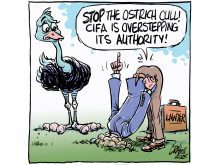TASK number one, with respect to Canada’s case of bovine spongiform encephalopathy: find the source and isolate the problem.
Task number two: do everything possible to reopen the borders to cattle and beef exports – and do it as soon as possible.
Task number three: Organize and deliver adequate compensation to those affected by this animal health disaster.
Tasks one and two are in progress. That sounds unduly glib, given the magnitude of each job, but task number three will be no runt of a job either.
Read Also

Budget seen as fairly solid, but worrying cracks appear
The reaction from the agriculture industry to prime minister Mark Carney’s first budget handed down November 4th has been largely positive.
It is going to require substantial and sustained effort to ensure that governments adequately address the financial tolls this situation will extract from the $30 billion Canadian cattle industry.
Will government response be adequate? Early indications make us wary, so it will be crucial for the cattle industry to present a united front when determining scope and costs, and then requesting compensation.
The wariness begins at the most basic level, direct compensation for animal loss. To date, about 1,000 animals have been slaughtered in the pursuit of BSE source and spread. The current compensation rate is fair market value per animal, to a maximum of $2,500. That seems reasonable for commercial animals but is sorely lacking for purebred producers. It’s an issue that government will be pressured to address.
Beyond that, things get hugely complicated. Lost revenues from exports are estimated by the industry at $11 million per day. Multiply that by 2.5 to calculate effects on feedlots, slaughter plants, auction markets, livestock trucking and sundry related businesses.
As an example of cost inflation, two Alberta feedlot owners last week estimated their exposure from three weeks of border closure on an inventory of 135,000 head: $13.5 million in the first week, assuming market value loss of $100 per head; another $6.75 million in the second week based on value loss of $50 per head; and $47.25 million in the third week assuming “market panic” and value loss of $350 per head.
Seventeen days into border closures, there are no signs of market panic, but the illustration of ballooning loss is sobering, to put it mildly.
Further, it emphasizes the need to spend all that is necessary now, on tasks one and two, to mitigate the damage. Potential losses could otherwise have a staggering size.
True to the admirably aggressive style shown by the Canadian cattle industry in handling the BSE issue from the start, producers have asked the federal government to indicate within the next several days the amount of compensation it is prepared to provide, as well as ideas on delivery method.
Compliance with that request, and assurance of substantial assistance, would provide some much-needed stability to an industry put in a precarious position by BSE.














